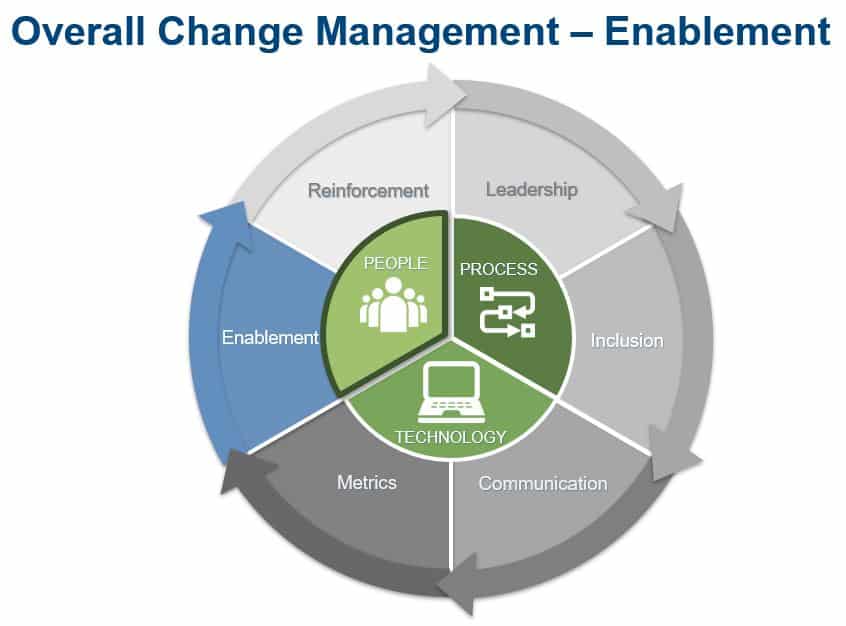In Six Key Principles of Successful Change Management, we introduced you to the principle of Enablement and the idea that Knowledge is power. Traditionally, enablement is thought of as only training; however, it’s much more.
The Oxford Dictionary defines enablement as “the act of making it possible for something to happen or for somebody to do something.”
In this post, we detail how to develop a strong, holistic enablement program to improve your organization’s success. The key areas we explore are: 1. How to understand if your organization is ready for the changes 2. Uncovering your organization’s preferred learning styles and enablement culture 3. Analyzing the training requirements of your organization

1. Organizational Readiness – Is your organization ready for the change?
With organizational transformations, shifting behaviors to new ways of working is critical. By conducting readiness assessments to determine your organization’s desire and ability for change, you gain insights to build an effective support program for training. In addition, assessments completed by your stakeholder groups are a great way to hear directly from teams impacted by the change. You will learn how they feel and what they understand about the coming changes, which could include changes to their roles and responsibilities. You should conduct assessments continuously to stay in tune with your teams and effectively manage the organization’s needs.
Some essential questions to ask:
- Are your teams aware of the changes?
- Do they feel leadership is supportive of the changes?
- Are they ready for change or is there change fatigue?
- What behaviors may need to be shifted to absorb the changes?
Gauging your organization’s readiness will determine what elements to add to your training program before the formal learning phase. Partnering with your communications or marketing team to develop messaging about the changes is an important step. Sponsorship support is also a critical component. Would you take time out of your day to learn something new if management told you not to focus on it? Ensuring leadership at the highest level is supportive and a frequent advocate for the project is essential for a successful implementation.
2. Learning Environment – Building a strong learning platform
In conjunction with the organization’s readiness for the change, you should assess your organization’s current learning styles, systems, and culture to develop a strong learning platform. This step outlines how the learning program should be deployed. How will you support the organization to ensure training is effective and yields high adoption? Without this step, the education may not be successfully received and lead to poor adoption. Below are key elements to consider when assessing your organization’s learning environment.
3. Training Analysis – Understanding the content
Once you determine your organization’s learning styles, you should conduct a training needs analysis to help you understand who is impacted and what content is needed for the training program.
The key elements to evaluate are:
- What are the changes from current to future state?
- What is the level of change?
- Who will be affected by these changes?
- What information needs to be communicated?
- What content needs to be developed into learning materials?
- What level of understanding will the organization need?
This information will determine the level of effort and support needed to develop the learning program.
Bringing it all together
You now have the components needed to create a training curriculum plan. Pull in the elements from the training needs analysis, become familiar with the software needed for material development and lastly, ensure you have outlined the training support governance model. It’s imperative to tie your training to the “why.” Why is your organization making this change? It’s easier to shift behavior if individuals understand the final goal and objectives of the project.
With the building blocks in place for a robust training program, you should incorporate the other change management principles to support Enablement, including Leadership, Inclusion, Communication, Metrics and Reinforcement. Actively addressing all six principles will ensure your organization has a well-developed Change Management Plan.
If your organization needs help implementing change management, Impact Advisors offers expert consultants with extensive experience.


